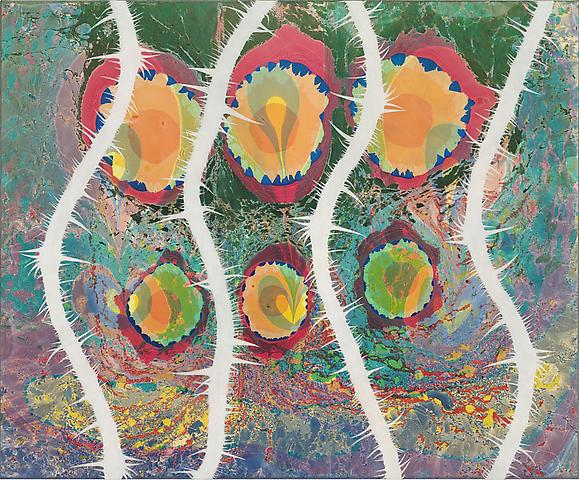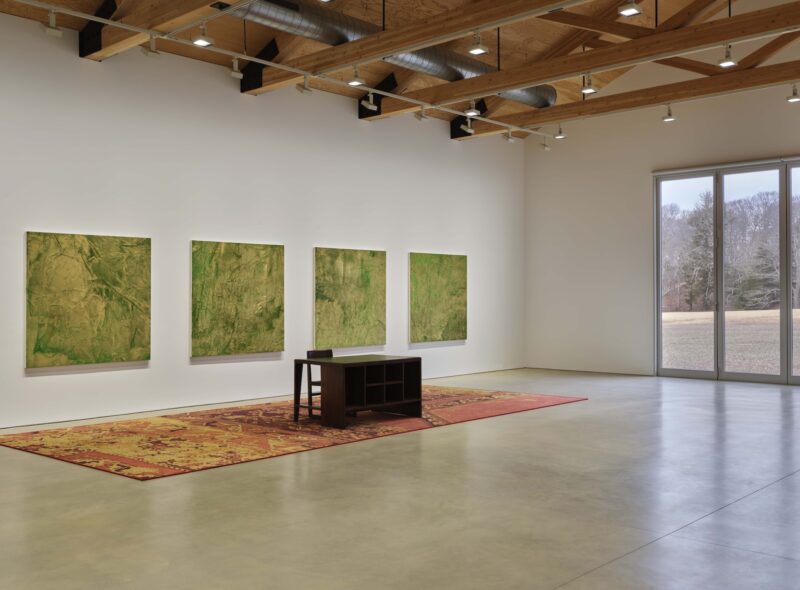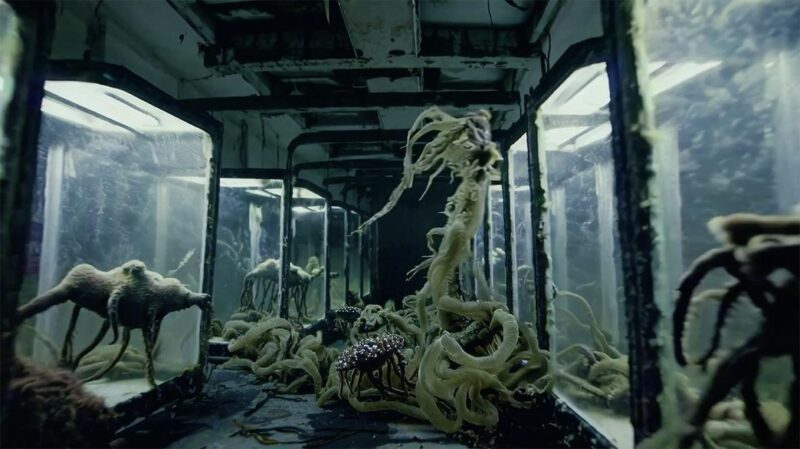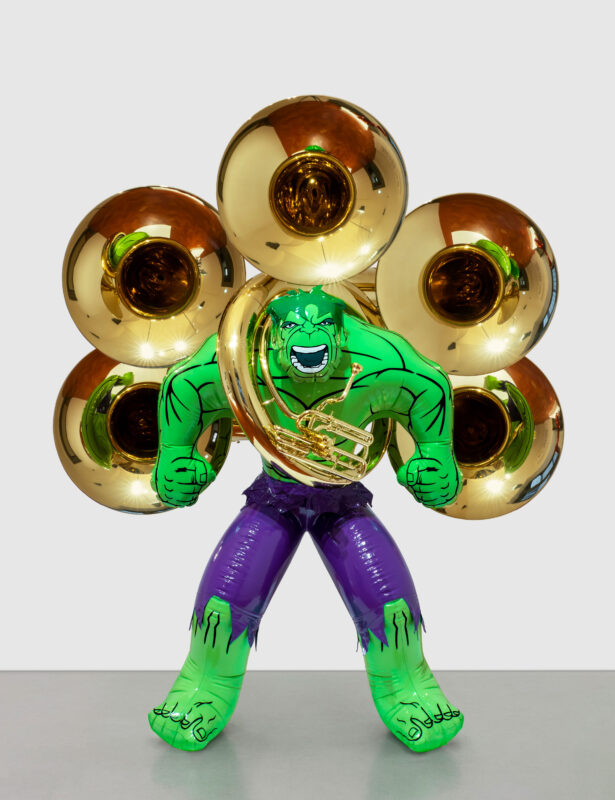
Philip Taaffe, Ludo Vico, 2007. Mixed media on paper, 18 3/4 x 25 in. Photo: Courtesy Gagosian Gallery
Taaffe’s elaborate images evolve out of wide-ranging meditationS on the interrelations between forms and images in art, nature, architecture, and archaeology filtered through a discerning and dynamic relation to the history of abstract painting both Occidental and Oriental. Drawing has always played an important role in his art. Early appropriationist works (after Bridget Riley, Myron Stout, Charles Shaw, and others) were largely hand-drawn. Later paintings were often assembled from preliminary graphic studies, transferred to paper via relief printing, and collaged onto the canvas. Monotypes and other print-transfer processes, including rubbing, have also served as the basis for many of his large-scale paintings.
Since 2003, Taaffe has experimented extensively with the technique of marbling, both on paper and canvas. The free-flowing visual energy that he so skillfully manifests in these “floating pigment” works – which refer to Oriental and Islamic calligraphy, as well as to early natural-history illustration – a new aesthetic dimension that departs from his often highly controlled and formal working methods. His recent works on paper are an exciting continuation of these explorations.
Adapting and adding the paste-paper technique to his wide-ranging visual lexicon, he has produced startling results. Paste papers date back to the eighteenth century and earlier, when they were used in decorative book-bindings. By mixing pigments with flour paste and other natural ingredients, an array of designs were created using combs, brushes, and other embossing tools. Décalcomanie was the French term originally used to describe this process, deriving from the use of decals to transfer imagery and patterns to porcelain. In the twentieth century the technique was rediscovered by the Surrealists and used to remarkable effect, evoking abstract imagery through chance operations and the automatic gesture. Taaffe’s archaeological process extends from the cochlear swirls of Flores Martis (2008) to the totemic skulls of Puteoli (2007) that emerge out of rainbow washes. In Tripoli (2009) and Spuma Lupi (2009), densely layered primordial forms verge on abstraction, disintegrating the formal distinctions between the two.

Image:Rugosa Strands, 2008 Mixed media on linen 43 x 52 inches (109.2 x 132 cm)
In his most recent paintings, Taaffe continues to synthesize and regenerate historically significant geometric forms and patterns that contain distinct cultural narratives. In three paintings from the “Andalusian” series begun in 2008, he superimposes the architectonic arabesque motif that he has used since the late eighties over explosions of color that are based on orizomegami or Japanese fold and dye paper techniques developed during the eighth century. For him, the unifying of the arabesque and the controlled unpredictability of the fold and dye patterns signify a historical overlap given that both techniques were firmly established by the ninth century. In one painting the ecstatic tension created between the dense lattice frame and the vibrant bursts of color create a sense of spatial instability and dynamism. In another, a shaped canvas is used to establish connections between the history of modernist abstraction, traditional Islamic imagery and Japanese aesthetics.
Philip Taaffe was born in Elizabeth, New Jersey in 1955 and studied at Cooper Union, New York. He has participated widely in international exhibitions, including the Carnegie International, the Biennale of Sydney and the Whitney Biennial of American Art, with individual survey exhibitions at IVAM, Valencia (2000), Galleria d’Arte Moderna, San Marino (2004), and Kunstmuseum Wolfsburg (2008). His work is included in numerous public collections, including the Museum of Modern Art, New York; the Museum of Fine Arts Boston; the Philadelphia Museum of Art; The Whitney Museum of American Art, New York; the Solomon R. Guggenheim Museum, New York; the San Francisco Museum of Art, and Museo Nacional Reina Sofia, Madrid. An exhibition of paintings from 2000-2010 will be presented at the Irish Museum of Modern Art, Dublin in May 2011.
Taaffe lives and works in New York City.
www.gagosian.com/







